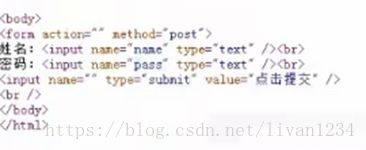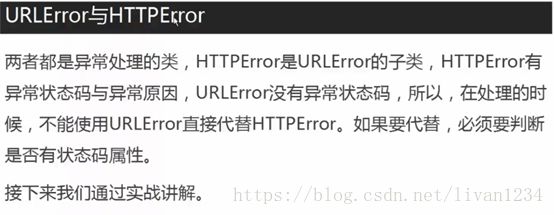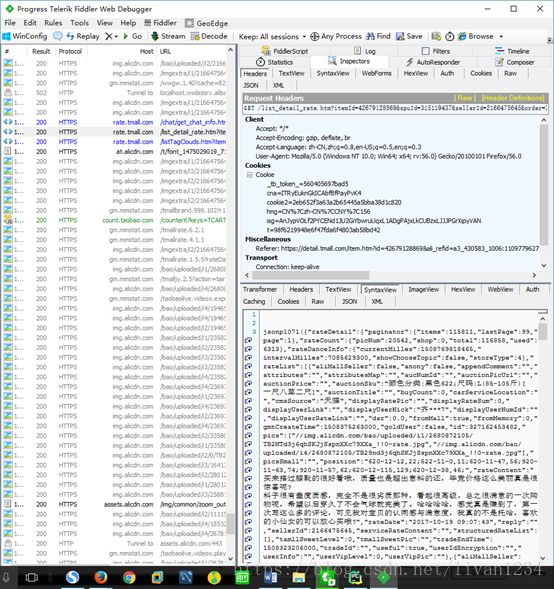web爬虫学习(一)——基础结构
笔者是一个痴迷于挖掘数据中的价值的学习人,希望在平日的工作学习中,挖掘数据的价值,找寻数据的秘密,笔者认为,数据的价值不仅仅只体现在企业中,个人也可以体会到数据的魅力,用技术力量探索行为密码,让大数据助跑每一个人,欢迎直筒们关注我的公众号,大家一起讨论数据中的那些有趣的事情。
我的公众号为:livandata
web爬虫是数据获取过程中的一个必要手段,能从页面上获取到我们所需要的数据,因其技术难度较低,效果又非常明显,能获取到较大的数据量,因此很多人学习,在此做一点介绍。
1、urllib库:不支持https的爬取,支持http的爬取。
豆瓣小案例:
#!/usr/bin/env python
# _*_ UTF-8 _*_
import urllib.request
import re
data = urllib.request.urlopen("https://read.douban.com/provider/all").read()
data = data.decode("utf-8")
pattern = '
mydata = re.compile(pattern).findall(data)
fh = open("出版社.txt", "w")
for i in range(0,len(mydata)):
fh.write(mydata[i]+"\n")
fh.close()
常用函数:
import urllib.request
#一、常用函数:
#1\将第一个参数中的网址,直接下载到filename路径下,爬下来的数据为一个网页。
data = urllib.request.urlretrieve("http://www.hellobi.com", filename="F:\python_workspace\spider_douban")
#2\清除缓存,清除urlretrieve等下载时保存的数据
urllib.request.urlcleanup()
#3\爬取页面数据
file = urllib.request.urlopen("http://www.hellobi.com")
#4\返回当环境的信息
file.info()
#5\获取当前网页的状态码和网址。
print(file.getcode())
print(file.geturl())
2、超时设置:
在urlopen中加入timeout参数。
file = urllib.request.urlopen("http://www.hellobi.com",timeout=10)
for i in range(0,100):
try:
file=urllib.request.urlopen("http://yum.iqianyue.com", timeout=1)
data=file.read()
print(len(data))
except Exception as e:
print("出现异常:"+str(e))3、自动模拟Http请求:
处理get请求:
#!/usr/bin/env python
# _*_ UTF-8 _*_
import urllib.request
keywd = "python"
#对网址中出现的中文进行相应的编码,得到进行编码之后的中文,后面可以直接使用。
keywd=urllib.request.quote(keywd)
url = "http://www.baidu.com/s?wd"+keywd+"&ie=urf-8&tn=96542061_hao_pg"
#将url封装为一个请求
req = urllib.request.Request(url)
data = urllib.request.urlopen(req).read()
fh = open("test.txt","wb")
fh.write(data)
fh.close()
如何处理post请求:
此时HTML的form中存在method=“post”
在新浪login.sina.com.cn中即可看到,form为post方式。
我们只需要form表单中的name属性即可。
#!/usr/bin/env python
# _*_ UTF-8 _*_
import urllib.request
import urllib.parse
url = "http://www.iqianyue.com/mypost/"
#设置对应的表单信息,urlencode中针对代码中的name值。
mydata = urllib.parse.urlencode({
"name":"[email protected]"
"pass":"123456"
}).encode("utf-8")
#将数据转换为请求
req = urllib.request.Request(url, mydata)
#发送请求
data = urllib.request.urlopen(req).read()
fh = open("test_post.txt","wb")
fh.write(data)
fh.close()
4、爬虫的异常处理:
异常处理主要是为了增强代码的稳定性。
urlError:
1、连不上服务器
2、远程的url不存在
3、本地没有网络
4、触发了对应的httpError子类
具体的实战为:
#!/usr/bin/env python
# _*_ UTF-8 _*_
import urllib.error
import urllib.request
try:
urllib.request.urlopen("http://blog.csdssn.net")
print("111")
except urllib.error.URLError as e:
if hasattr(e, "code"):
print(e.code)
if hasattr(e, "reason"):
print(e.reason)
5、爬虫的伪装技术(浏览器):
#!/usr/bin/env python
# _*_ UTF-8 _*_
import urllib.error
import urllib.request
url="http://blog.csdn.net/weiwei_pig/article/details/52123738"
header = ("User-Agent":"Mozilla/5.0(Windows NT 10.0; WOW64) AppleWebKit/537.36 (KHTML, like Gecko)Chrome/56.0.2924.87 Safari/537.36")
#用来添加报头信息
opener = urllib.request.build_opener()
opener.addheaders=[header]
data = opener.open(url).read()
fh = open("test_header","wb")
fh.write(data)
fh.close()
6、新闻网站爬取:
#!/usr/bin/env python
# _*_ UTF-8 _*_
import urllib.request
import re
data = urllib.request.urlopen("http://news.sina.com.cn/").read()
data2 = data.decode("utf-8", "ignore")
pat = 'href="(http://news.sina.com.cn/.*?)">'
allurl = re.compile(pat).findall(data2)
for i in range(0, len(allurl)):
try:
print("第"+str(i)+"次爬取")
thisurl = allurl[i]
file = str(i)+".html"
urllib.request.urlretrieve(thisurl, file)
print("------成功-------")
except urllib.request.URLErroras e:
if hasattr(e, "code"):
print(e.code)
if hasattr(e, "reason"):
print(e.reason)
7、爬虫防屏蔽手段之代理服务器:
#!/usr/bin/env python
# _*_ UTF-8 _*_
import urllib.request
import re
url = "http://blog.csdn.net/"
headers = ("User-Agent","Mozilla/5.0(Windows NT 10.0; WOW64) AppleWebKit/537.36 (KHTML, like Gecko)Chrome/56.0.2924.87 Safari/537.36")
#建一个浏览器opener
opener = urllib.request.build_opener()
#将头加入到opener中
opener.addheaders=[headers]
#将opener安装为全局
urllib.request.install_opener(opener)
data = urllib.request.urlopen(url).read().decode("utf-8", "ignore")
pat = '
result = re.compile(pat).findall(data)
for i in range(0, len(result)):
file = str(i)+".html"
urllib.request.urlretrieve(result[i], filename=file)
print("第"+str(i)+"次爬取成功")
#由此可以将CSDN首页所有的文章爬取下来。
如何做代理:
#!/usr/bin/env python
# _*_ UTF-8 _*_
import urllib.request
def use_proxy(url, proxy_addr):
proxy = urllib.request.ProxyHandler({"http": proxy_addr})
opener =urllib.request.build_opener(proxy, urllib.request.HTTPHandler)
urllib.request.install_opener(opener)
data =urllib.request.urlopen(url).read().decode("utf-8", "ignore")
return data
proxy_addr = []"110.73.43.18:8123"
url = "http://www.baidu.com"
data = use_proxy(url, proxy_addr)
print(len(data))
8、图片爬虫实战:
在浏览器爬取时,有时不同的浏览器会有不同的查询结果,解析出不同的源码。
首先在“审查元素”中确定元素的重点字段是哪些,然后再在“源码”中查找对应的图片位置,确定图片url的规则。
#!/usr/bin/env python
# _*_ UTF-8 _*_
import urllib.request
import re
keyname = "短裙"
key = urllib.request.quote(keyname)
headers = ("User_Agent", "Mozilla/5.0(Windows NT 10.0; WOW64; rv:53.0) Gecko/20100101 Firefox/53.0")
opener = urllib.request.build_opener()
opener.addheaders=[headers]
urllib.request.install_opener(opener)
for i in range(0, 10):
url =
"https://s.taobao.com/search?q="+key+"&imgfile=&commend=all&ssid=s5-e&search_type=item&sourceId=tb.index&spm=a21bo.2017.201856-taobao-item.1&ie=utf8&initiative_id=tbindexz_20170306&bcoffset=4&ntoffset=4&p4ppushleft=1%2C48&s="+str(i*44)
data =urllib.request.urlopen(url).read().decode(
data =urllib.request.urlopen(url).read().decode("utf-8", "ignore")
pat = 'pic_url":"//(.*?)"'
imagelist =re.compile(pat).findall(data)
for j in range(0, len(imagelist)):
thisimg = imagelist[j]
thisimgurl = "http://"+thisimg
file = "F:/python_workspace/test/pic/"+str(i)+str(j)+".jpg"
urllib.request.urlretrieve(thisimgurl, filename=file)
在源码解决不了的情况下,需要进行抓包。
作业:千图网的爬取(可以通过调试找到报错原因):
#!/usr/bin/env python
# _*_ UTF-8 _*_
import urllib.request
import re
for i in range(1,10):
pageurl = "http://www.58pic.com/piccate/3-153-652-"+str(i)+".html"
data =urllib.request.urlopen(pageurl).read().decode("utf-8", "ignore")
pat = '
for j in range(0,len(imglist)):
try:
thisimg = imglist[j]
thisimgurl = thisimg+"_1024.jpg"
file = "F:/python_workspace/test/pic2/"+str(i)+str(j)+".jpg"
urllib.request.urlretrieve(thisimgurl, filename=file)
print("第"+str(i)+"页第"+str(j)+"个图片爬取成功")
except urllib.error.URLError as e:
if hasattr(e, "code"):
print(e.code)
if hasattr(e, "reason"):
print(e.reason)
except Exception as e:
print(e)
9、抓包分析实战(一)
获取淘宝的评论信息、腾讯的娱乐新闻信息等需要抓包分析。
如何抓取https的数据包以及腾讯视频的评论。
TextView:显示返回的信息;
通过fiddler找到含有评论的网址,复制出对应的网址,观察网址的规则。
设置完fiddler之后,点击要爬取的页面,回到fiddler中,确定有js内容的链接:
对应的网址为:
https://rate.tmall.com/list_detail_rate.htm?itemId=42679128869&spuId=315119437&sellerId=2166475645&order=3¤tPage=1&append=0&content=1&tagId=&posi=&picture=&ua=098%23E1hv%2FpvEvbQvUvCkvvvvvjiPP2Lw0jEbPL59AjnEPmPZQj1Pn2L9QjEvR2MwljE8vphvC9vhvvCvpvyCvhQvryGvCzox9WFIRfU6pwet9E7rejZIYExr1EuK46en3OkQrEttpR2y%2BnezrmphQRAn3feAOHPIAXcBKFyK2ixrlj7xD7QHYWsUtE97Kphv8vvvvvCvpvvvvvmCc6Cv2UIvvUnvphvpgvvv96CvpCCvvvmCXZCvhhmEvpvV2vvC9jx2uphvmvvv98GEKUM72QhvCvvvMMGtvpvhvvvvv8wCvvpvvUmm3QhvCvvhvvv%3D&isg=AoKCecM7b7NouHNtRCUm6rar0osk--IFkGgfUsyboPWxHyKZtOPWfQjduSCd&needFold=0&_ksTS=1508769919830_1070&callback=jsonp1071
然后确定其中的itemId等字段的内容,其中的部分内容未必有用处,可以直接删除,比如上面url的ua字段。
如果要抓取https的数据:
Fiddler默认只能抓取HTTP协议的网页,不能抓取HTTPS协议的网页,而我们很多时候,都需要抓HTTPS协议的网页,比如抓淘宝数据等。今天,韦玮老师会为大家讲解如何使用Fiddler抓取HTTPS协议的网页。
打开Fiddler,点击“Tools--FiddlerOptions--HTTPS”,把下方的全勾上,如下图所示:
然后,点击Action,选择将CA证书导入到桌面,即第二项,导出后,点击上图的ok保存配置。
然后在桌面上就有了导出的证书,如下所示:
随后,我们可以在浏览器中导入该证书。我们打开火狐浏览器,打开“选项--高级--证书--导入”,选择桌面上的证书,导入即可。随后,Fiddler就可以抓HTTPS协议的网页了。如下图所示。
抓取腾讯视频的评论:
下图为带评论的js文件(从fiddler中获取):
其中有多个字段,commentid等,在点击“加载更多”时,commentID会发生变化,在第一个url的源码中会找到下一个评论url的地址,找到last字段,即为下一个url的commentid,以此来构造下一个url。
#!/usr/bin/env python
# _*_ UTF-8 _*_
import urllib.request
import re
import urllib.error
headers = ("User_Agent", "Mozilla/5.0(Windows NT 10.0; WOW64; rv:53.0) Gecko/20100101 Firefox/53.0")
opener = urllib.request.build_opener()
opener.addheaders = [headers]
urllib.request.install_opener(opener)
comid = "6323280825454961655"
url = "http://coral.qq.com/article/2102904258/comment?commentid="+comid+"&reqnum=20&tag=&callback=jQuery1124020025941284059412_1508770934137&_=1508770934145"
for i in range(0, 100):
data =urllib.request.urlopen(url).read().decode()
patnext = '"last":"(.*?)"'
nextid =re.compile(patnext).findall(data)[0]
patcom = '"content":"(.*?)",'
comdata =re.compile(patcom).findall(data)
for j in range(0, len(comdata)):
print("------第"+str(i)+str(j)+"条评论内容是:")
print(eval('u"'+comdata[j]+'"'))
url = "http://coral.qq.com/article/2102904258/comment?commentid="+nextid+"&reqnum=20&tag=&callback=jQuery1124020025941284059412_1508770934137&_=1508770934145"
10、微信爬虫实战:
如何解决微信的限制?
#!/usr/bin/env python
# _*_ UTF-8 _*_
#http://weixin.sogou.com/
import re
import urllib.request
import time
import urllib.error
#自定义函数,功能为使用代理服务器爬一个网址
def use_proxy(proxy_addr, url):
#建立异常处理机制
try:
req = urllib.request.Request(url)
req.add_header("User_Agent", "Mozilla/5.0(Windows NT 10.0; WOW64; rv:53.0) Gecko/20100101 Firefox/53.0")
proxy =urllib.request.ProxyHandler({'http':proxy_addr})
opener =urllib.request.build_opener(proxy, urllib.request.HTTPHandler)
urllib.request.install_opener(opener)
data =urllib.request.urlopen(req).read()
return data
except urllib.error.URLErroras e:
if hasattr(e, "code"):
print(e.code)
if hasattr(e, "reason"):
print(e.reason)
#若为URLError异常,延时10秒执行
time.sleep(10)
except Exception as e:
print("exception:"+str(e))
time.sleep(1)
#设置关键词
key = "Python"
#设置代理服务器,该代理服务器有可能失效,读者需要换成新的有效代理服务器
#即通过fiddler中转爬取。
proxy = "127.0.0.1:8888"
#爬多少页:
for i in range(0, 10):
key = urllib.request.quote(key)
thispageurl = "http://weixin.sogou.com/weixin?type=2&query="+key+"&page"+str(i)
#a="http://blog.csdn.net"
thispagedata =use_proxy(proxy, thispageurl)
print(len(str(thispagedata)))
pat1 = '
if(len(rs1)==0):
print("此次("+str(i)+"页)没成功")
continue
for j in range(0, len(rs1)):
thisurl = rs1[j]
#提取到的网址与通过浏览器实际跳转的页面网址不完全一致,通过比#较观察发现,爬取的页面中有amp字段为多余。
thisurl = thisurl.replace("amp;","")
file = "F:/python_workspace/test/wechat/第"+str(i)+"页第"+str(j)+"篇文章.html"
thisdata =use_proxy(proxy, thisurl)
try:
fh = open(file, "wb")
fh.write(thisdata)
fh.close()
print("第"+str(i)+"页第"+str(j)+"篇文章成功")
except Exception as e:
print(e)
print("第"+str(i)+"页第"+str(j)+"篇文章失败")
微信爬虫的爬取依然是使用浏览器,即在搜狗浏览器上使用微信网页版,然后编辑这个页面的url,以获取内容。
11、多线程爬取实战
糗事百科的代码:
#!/usr/bin/env python
# _*_ UTF-8 _*_
import urllib.request
import re
import urllib.error
headers = ("User_Agent", "Mozilla/5.0(Windows NT 10.0; WOW64; rv:53.0) Gecko/20100101 Firefox/53.0")
opener = urllib.request.build_opener()
opener.addheaders=[headers]
urllib.request.install_opener(opener)
for i in range(1, 2):
url = "https://www.qiushibaike.com/8hr/page/"+str(i)
pagedata=urllib.request.urlopen(url).read().decode("utf-8","ignore")
pat='
datalist =re.compile(pat, re.S).findall(pagedata)
for j in range(0, len(datalist)):
print("第"+str(i)+"页第"+str(j)+"个段子的内容是:")
print(datalist[j])
将此程序改为多进程为:
#!/usr/bin/env python
# _*_ UTF-8 _*_
import urllib.request
import re
import urllib.error
import threading
headers = ("User_Agent", "Mozilla/5.0(Windows NT 10.0; WOW64; rv:53.0) Gecko/20100101 Firefox/53.0")
opener = urllib.request.build_opener()
opener.addheaders=[headers]
urllib.request.install_opener(opener)
class One(threading.Thread):
def __init__(self):
threading.Thread.__init__(self)
def run(self):
for i in range(1, 36, 2):
url = "https://www.qiushibaike.com/8hr/page/"+str(i)
pagedata=urllib.request.urlopen(url).read().decode("utf-8","ignore")
pat='
datalist =re.compile(pat, re.S).findall(pagedata)
for j in range(0, len(datalist)):
print("第"+str(i)+"页第"+str(j)+"个段子的内容是:")
print(datalist[j])
class Two(threading.Thread):
def __init__(self):
threading.Thread.__init__(self)
def run(self):
for i in range(0, 36, 2):
url = "https://www.qiushibaike.com/8hr/page/"+str(i)
pagedata=urllib.request.urlopen(url).read().decode("utf-8","ignore")
pat='
datalist =re.compile(pat, re.S).findall(pagedata)
for j in range(0, len(datalist)):
print("第"+str(i)+"页第"+str(j)+"个段子的内容是:")
print(datalist[j])
one = One()
one.start()
two = Two()
two.start()


















